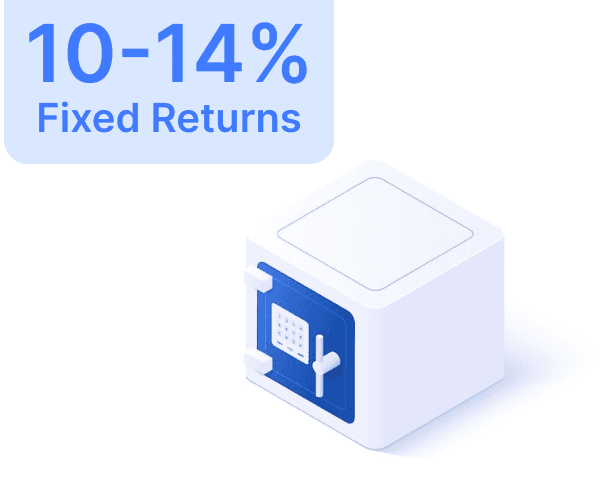Open Ended Funds



Introduction
Introduction
Introduction
Introduction
Mutual funds can be structured into three types: open-ended, closed-ended, and interval funds. Among these, open-ended mutual funds are the most common and popular among investors. In this discussion, we will explore open-ended mutual funds, examining the different types available in India, their benefits, and much more.
It's safe to say that when people refer to mutual funds, they typically mean open-ended mutual funds. Unlike closed-ended funds, the units of open-ended funds are not traded on the stock exchange, and there is no limit on the number of units the fund can issue.
Investors can purchase or redeem units directly from the fund house on any working day at the existing Net Asset Value (NAV) of the scheme.
The NAV is determined by the performance of the fund's underlying securities. These schemes do not have a maturity period.
Mutual funds can be structured into three types: open-ended, closed-ended, and interval funds. Among these, open-ended mutual funds are the most common and popular among investors. In this discussion, we will explore open-ended mutual funds, examining the different types available in India, their benefits, and much more.
It's safe to say that when people refer to mutual funds, they typically mean open-ended mutual funds. Unlike closed-ended funds, the units of open-ended funds are not traded on the stock exchange, and there is no limit on the number of units the fund can issue.
Investors can purchase or redeem units directly from the fund house on any working day at the existing Net Asset Value (NAV) of the scheme.
The NAV is determined by the performance of the fund's underlying securities. These schemes do not have a maturity period.
Mutual funds can be structured into three types: open-ended, closed-ended, and interval funds. Among these, open-ended mutual funds are the most common and popular among investors. In this discussion, we will explore open-ended mutual funds, examining the different types available in India, their benefits, and much more.
It's safe to say that when people refer to mutual funds, they typically mean open-ended mutual funds. Unlike closed-ended funds, the units of open-ended funds are not traded on the stock exchange, and there is no limit on the number of units the fund can issue.
Investors can purchase or redeem units directly from the fund house on any working day at the existing Net Asset Value (NAV) of the scheme.
The NAV is determined by the performance of the fund's underlying securities. These schemes do not have a maturity period.
Advantages of Open-Ended Mutual Funds
Advantages of Open-Ended Mutual Funds
Advantages of Open-Ended Mutual Funds
Advantages of Open-Ended Mutual Funds
Here are some key advantages of open-ended mutual funds:
Highly Liquid
As an investor, you can redeem the units of an open-ended fund on any working day, providing your investment portfolio with essential liquidity. While many investment options offer good returns, they often come with a lock-in period that makes your money illiquid until maturity. Open-ended mutual funds, on the other hand, offer maximum liquidity.
Performance Across Market Cycles
Since investors can buy or redeem units from the fund house at any time, a quick look at the historical performance of an open-ended fund can provide insight into its performance across different market cycles. This information helps you make informed decisions and invest according to your plan.
Availability of SIP
With the ability to purchase units on any working day, you can set up a systematic investment plan (SIP) to invest a fixed amount in the scheme regularly. This is particularly beneficial for salaried individuals and those without a large investable corpus. Additionally, investing through an SIP can help you build a corpus from scratch.
Here are some key advantages of open-ended mutual funds:
Highly Liquid
As an investor, you can redeem the units of an open-ended fund on any working day, providing your investment portfolio with essential liquidity. While many investment options offer good returns, they often come with a lock-in period that makes your money illiquid until maturity. Open-ended mutual funds, on the other hand, offer maximum liquidity.
Performance Across Market Cycles
Since investors can buy or redeem units from the fund house at any time, a quick look at the historical performance of an open-ended fund can provide insight into its performance across different market cycles. This information helps you make informed decisions and invest according to your plan.
Availability of SIP
With the ability to purchase units on any working day, you can set up a systematic investment plan (SIP) to invest a fixed amount in the scheme regularly. This is particularly beneficial for salaried individuals and those without a large investable corpus. Additionally, investing through an SIP can help you build a corpus from scratch.
Here are some key advantages of open-ended mutual funds:
Highly Liquid
As an investor, you can redeem the units of an open-ended fund on any working day, providing your investment portfolio with essential liquidity. While many investment options offer good returns, they often come with a lock-in period that makes your money illiquid until maturity. Open-ended mutual funds, on the other hand, offer maximum liquidity.
Performance Across Market Cycles
Since investors can buy or redeem units from the fund house at any time, a quick look at the historical performance of an open-ended fund can provide insight into its performance across different market cycles. This information helps you make informed decisions and invest according to your plan.
Availability of SIP
With the ability to purchase units on any working day, you can set up a systematic investment plan (SIP) to invest a fixed amount in the scheme regularly. This is particularly beneficial for salaried individuals and those without a large investable corpus. Additionally, investing through an SIP can help you build a corpus from scratch.
Disadvantages of Open-Ended Mutual Funds
Disadvantages of Open-Ended Mutual Funds
Disadvantages of Open-Ended Mutual Funds
Disadvantages of Open-Ended Mutual Funds
Here are some key disadvantages of open-ended mutual funds:
High Volatility
The NAV of an open-ended mutual fund fluctuates based on the performance of its underlying securities, making these funds susceptible to market risks and high volatility. Although fund managers attempt to mitigate this volatility by diversifying investments, a certain degree of market risk always exists.
Large Inflows and Withdrawals
Unlike closed-ended funds, open-ended schemes are subject to significant inflows and withdrawals. Rapid outflows may force a fund manager to sell assets at unfavorable prices, potentially resulting in losses for all investors in the scheme.
Cash Flow Risks
Open-ended funds are also vulnerable to market and cash flow risks. The NAV of these funds changes daily in response to market volatility, impacting the overall performance and stability of the investment.
Here are some key disadvantages of open-ended mutual funds:
High Volatility
The NAV of an open-ended mutual fund fluctuates based on the performance of its underlying securities, making these funds susceptible to market risks and high volatility. Although fund managers attempt to mitigate this volatility by diversifying investments, a certain degree of market risk always exists.
Large Inflows and Withdrawals
Unlike closed-ended funds, open-ended schemes are subject to significant inflows and withdrawals. Rapid outflows may force a fund manager to sell assets at unfavorable prices, potentially resulting in losses for all investors in the scheme.
Cash Flow Risks
Open-ended funds are also vulnerable to market and cash flow risks. The NAV of these funds changes daily in response to market volatility, impacting the overall performance and stability of the investment.
Here are some key disadvantages of open-ended mutual funds:
High Volatility
The NAV of an open-ended mutual fund fluctuates based on the performance of its underlying securities, making these funds susceptible to market risks and high volatility. Although fund managers attempt to mitigate this volatility by diversifying investments, a certain degree of market risk always exists.
Large Inflows and Withdrawals
Unlike closed-ended funds, open-ended schemes are subject to significant inflows and withdrawals. Rapid outflows may force a fund manager to sell assets at unfavorable prices, potentially resulting in losses for all investors in the scheme.
Cash Flow Risks
Open-ended funds are also vulnerable to market and cash flow risks. The NAV of these funds changes daily in response to market volatility, impacting the overall performance and stability of the investment.
Who Should Invest in an Open Ended Mutual Fund?
Who Should Invest in an Open Ended Mutual Fund?
Who Should Invest in an Open Ended Mutual Fund?
Who Should Invest in an Open Ended Mutual Fund?
Open-ended funds constitute the largest segment of the mutual fund market, making them accessible to most investors. However, it's important to ensure that your investments align with your financial goals, risk tolerance, and investment horizon.
Open-ended funds constitute the largest segment of the mutual fund market, making them accessible to most investors. However, it's important to ensure that your investments align with your financial goals, risk tolerance, and investment horizon.
Open-ended funds constitute the largest segment of the mutual fund market, making them accessible to most investors. However, it's important to ensure that your investments align with your financial goals, risk tolerance, and investment horizon.
Tax on Open Ended Funds Gains
Tax on Open Ended Funds Gains
Tax on Open Ended Funds Gains
Tax on Open Ended Funds Gains
Gains on mutual funds are subject to taxation, and the tax rules and rates differ for debt and equity funds.
For open-ended mutual funds, the tax rules and rates depend on the percentage of investments in debt and equity:
If the fund invests 65% or more of its total assets in debt instruments, it is treated as a debt fund for tax purposes.
If the fund invests at least 65% of its total assets in equity, it is treated as an equity fund for tax purposes.
Make sure to read the offer document carefully and check the scheme's asset allocation to understand the applicable tax rates.
Gains on mutual funds are subject to taxation, and the tax rules and rates differ for debt and equity funds.
For open-ended mutual funds, the tax rules and rates depend on the percentage of investments in debt and equity:
If the fund invests 65% or more of its total assets in debt instruments, it is treated as a debt fund for tax purposes.
If the fund invests at least 65% of its total assets in equity, it is treated as an equity fund for tax purposes.
Make sure to read the offer document carefully and check the scheme's asset allocation to understand the applicable tax rates.
Gains on mutual funds are subject to taxation, and the tax rules and rates differ for debt and equity funds.
For open-ended mutual funds, the tax rules and rates depend on the percentage of investments in debt and equity:
If the fund invests 65% or more of its total assets in debt instruments, it is treated as a debt fund for tax purposes.
If the fund invests at least 65% of its total assets in equity, it is treated as an equity fund for tax purposes.
Make sure to read the offer document carefully and check the scheme's asset allocation to understand the applicable tax rates.
What are open-ended mutual funds?
Open-ended mutual funds are a type of mutual fund where investors can buy or redeem units directly from the fund house on any working day at the prevailing Net Asset Value (NAV). These funds do not have a maturity period and offer high liquidity.
How are gains from open-ended mutual funds taxed?
Gains from open-ended mutual funds are subject to taxation. The tax rules and rates vary depending on the fund’s asset allocation between debt and equity investments.
How are open-ended mutual funds classified for tax purposes?
For tax purposes, if a fund invests 65% or more of its total assets in debt instruments, it is classified as a debt fund. If the fund invests at least 65% in equity and equity-related instruments, it is classified as an equity fund.
What should I consider before investing in open-ended mutual funds?
Before investing, consider your financial goals, risk tolerance, and investment horizon. Additionally, review the fund’s offer document to understand the asset allocation and the applicable tax rates.
Why is the asset allocation important for understanding tax rates on open-ended mutual funds?
The asset allocation determines whether the fund is classified as a debt or equity fund, which affects the applicable tax rates. Understanding the fund’s asset allocation helps investors anticipate the tax implications of their investments.
What are open-ended mutual funds?
Open-ended mutual funds are a type of mutual fund where investors can buy or redeem units directly from the fund house on any working day at the prevailing Net Asset Value (NAV). These funds do not have a maturity period and offer high liquidity.
How are gains from open-ended mutual funds taxed?
Gains from open-ended mutual funds are subject to taxation. The tax rules and rates vary depending on the fund’s asset allocation between debt and equity investments.
How are open-ended mutual funds classified for tax purposes?
For tax purposes, if a fund invests 65% or more of its total assets in debt instruments, it is classified as a debt fund. If the fund invests at least 65% in equity and equity-related instruments, it is classified as an equity fund.
What should I consider before investing in open-ended mutual funds?
Before investing, consider your financial goals, risk tolerance, and investment horizon. Additionally, review the fund’s offer document to understand the asset allocation and the applicable tax rates.
Why is the asset allocation important for understanding tax rates on open-ended mutual funds?
The asset allocation determines whether the fund is classified as a debt or equity fund, which affects the applicable tax rates. Understanding the fund’s asset allocation helps investors anticipate the tax implications of their investments.
What are open-ended mutual funds?
Open-ended mutual funds are a type of mutual fund where investors can buy or redeem units directly from the fund house on any working day at the prevailing Net Asset Value (NAV). These funds do not have a maturity period and offer high liquidity.
How are gains from open-ended mutual funds taxed?
Gains from open-ended mutual funds are subject to taxation. The tax rules and rates vary depending on the fund’s asset allocation between debt and equity investments.
How are open-ended mutual funds classified for tax purposes?
For tax purposes, if a fund invests 65% or more of its total assets in debt instruments, it is classified as a debt fund. If the fund invests at least 65% in equity and equity-related instruments, it is classified as an equity fund.
What should I consider before investing in open-ended mutual funds?
Before investing, consider your financial goals, risk tolerance, and investment horizon. Additionally, review the fund’s offer document to understand the asset allocation and the applicable tax rates.
Why is the asset allocation important for understanding tax rates on open-ended mutual funds?
The asset allocation determines whether the fund is classified as a debt or equity fund, which affects the applicable tax rates. Understanding the fund’s asset allocation helps investors anticipate the tax implications of their investments.
Author

Harish Malhi
Read More 📖


Axis Bank Credit Card Net Banking
Axis Bank Credit Card Net Banking
August 5, 2024
August 5, 2024




PNB Fixed Deposit (FD) Interest Rates
PNB Fixed Deposit (FD) Interest Rates
August 5, 2024
August 5, 2024




Linking Aadhaar to Your Punjab National Bank Account
Linking Aadhaar to Your Punjab National Bank Account
August 5, 2024
August 5, 2024




PNB SIP Calculator
PNB SIP Calculator
August 5, 2024
August 5, 2024




How to Close a PNB Account Online & Offline?
How to Close a PNB Account Online & Offline?
August 5, 2024
August 5, 2024




TDS Refund - How to Claim TDS Refund
TDS Refund - How to Claim TDS Refund
August 5, 2024
August 5, 2024


View More




